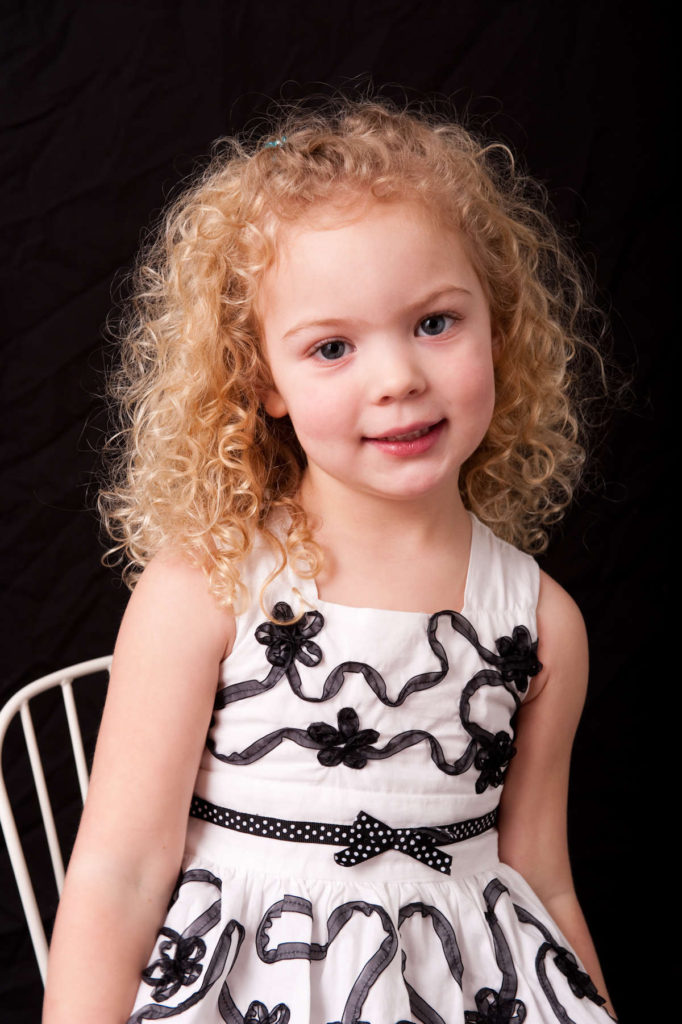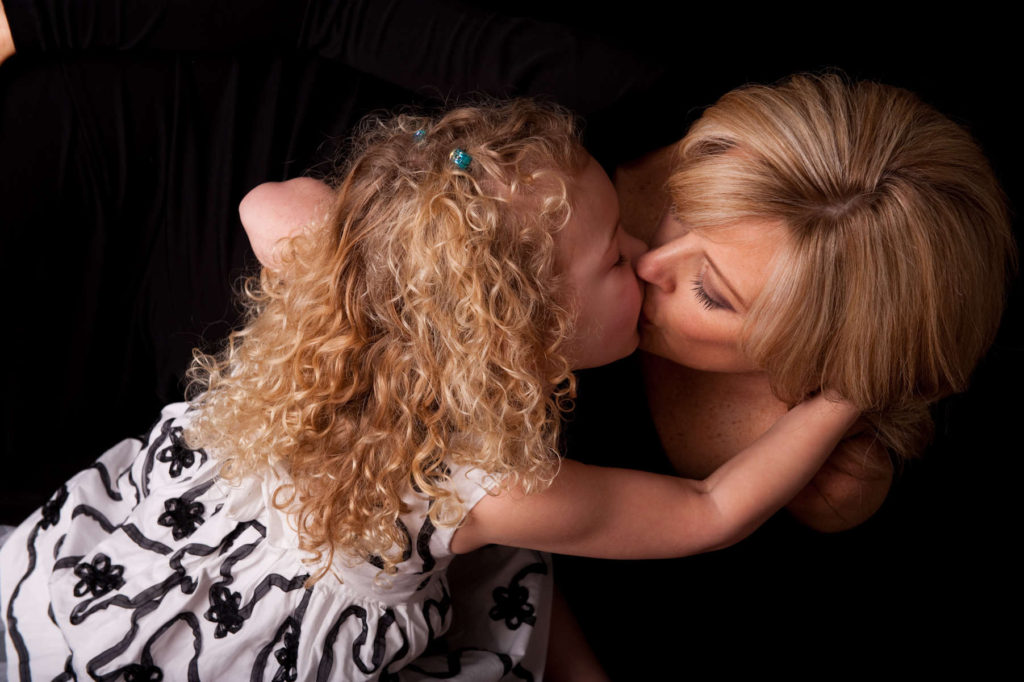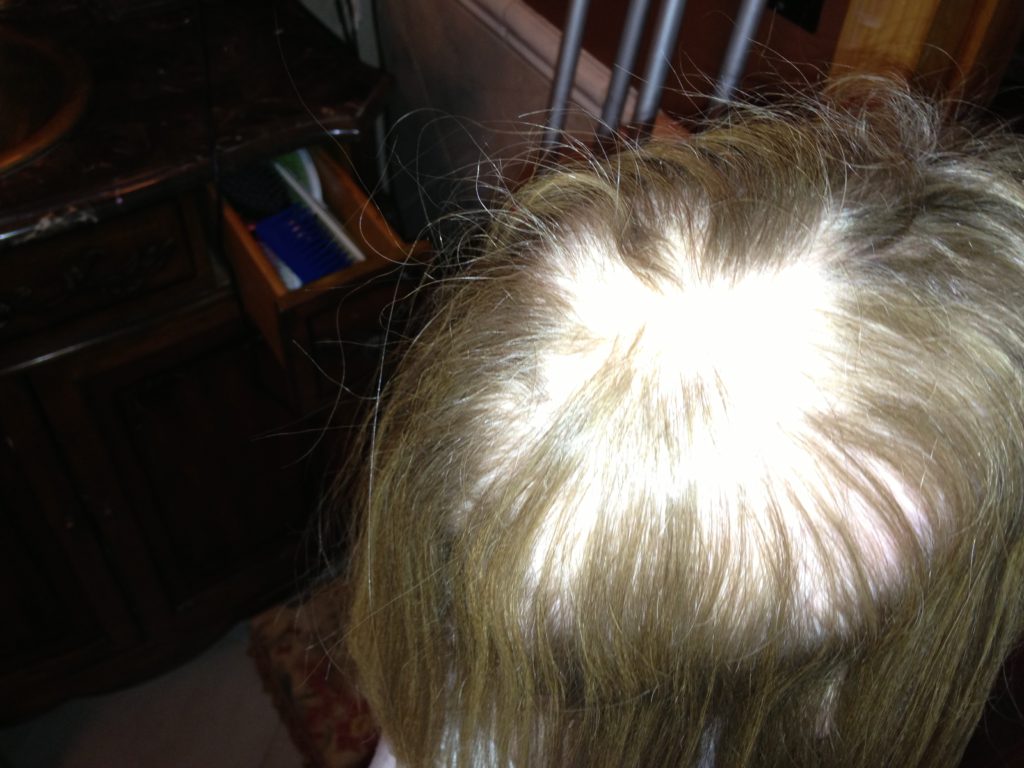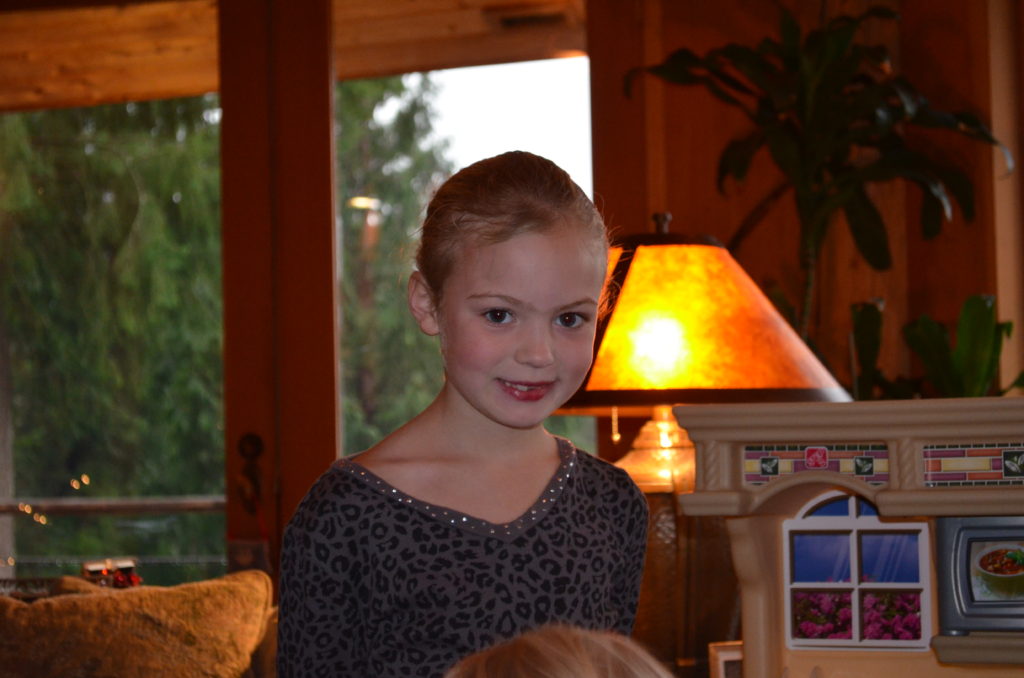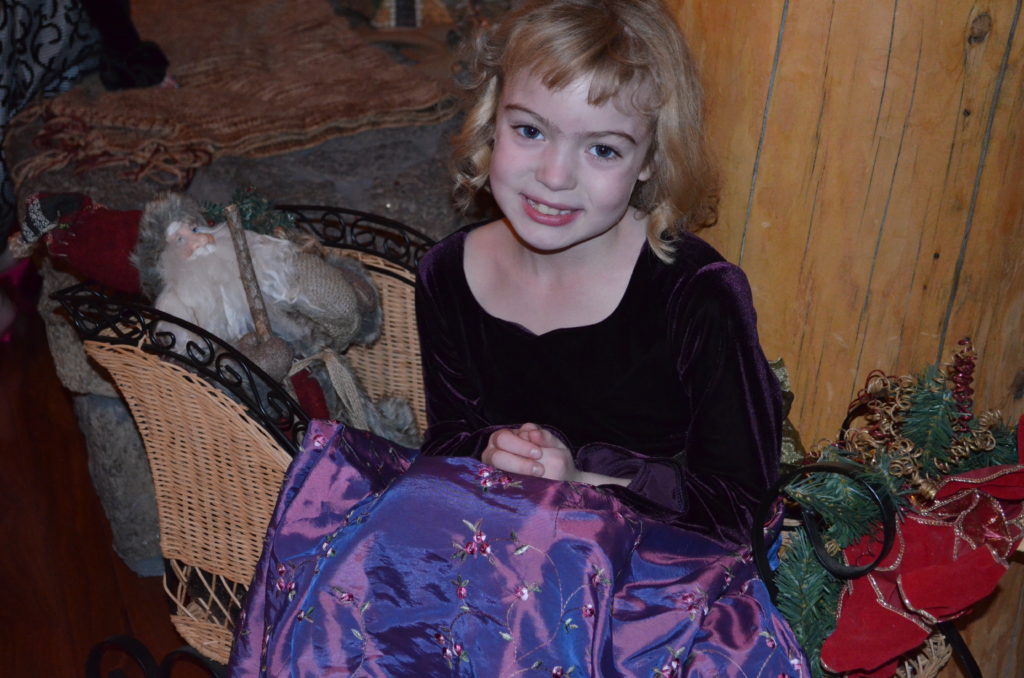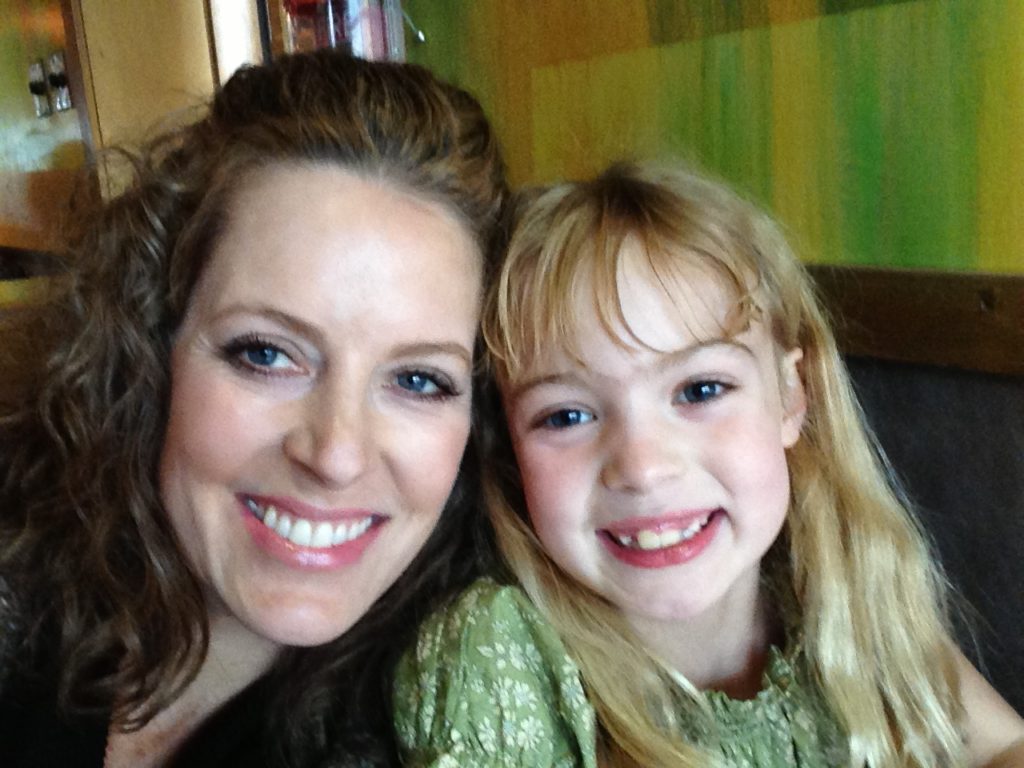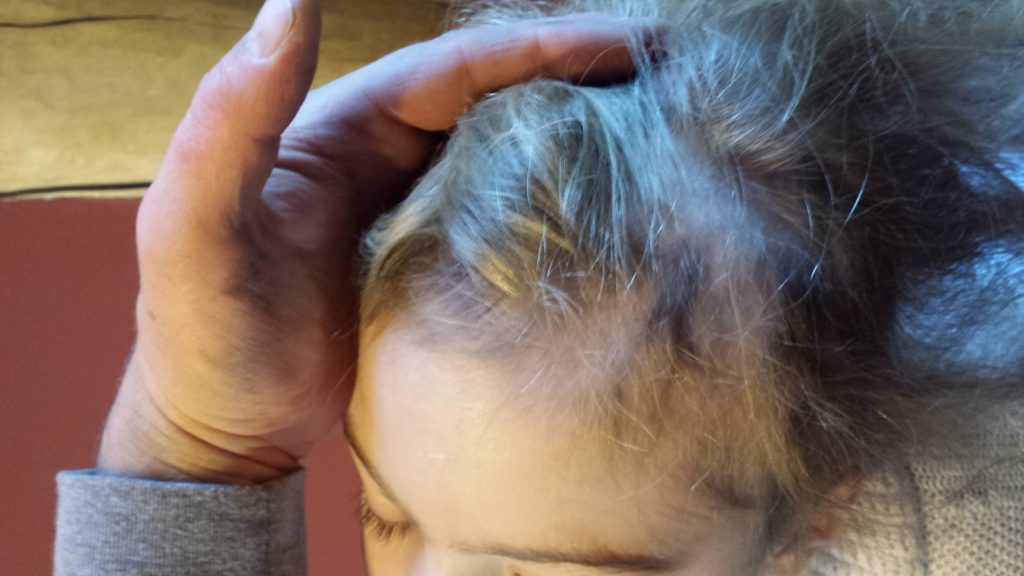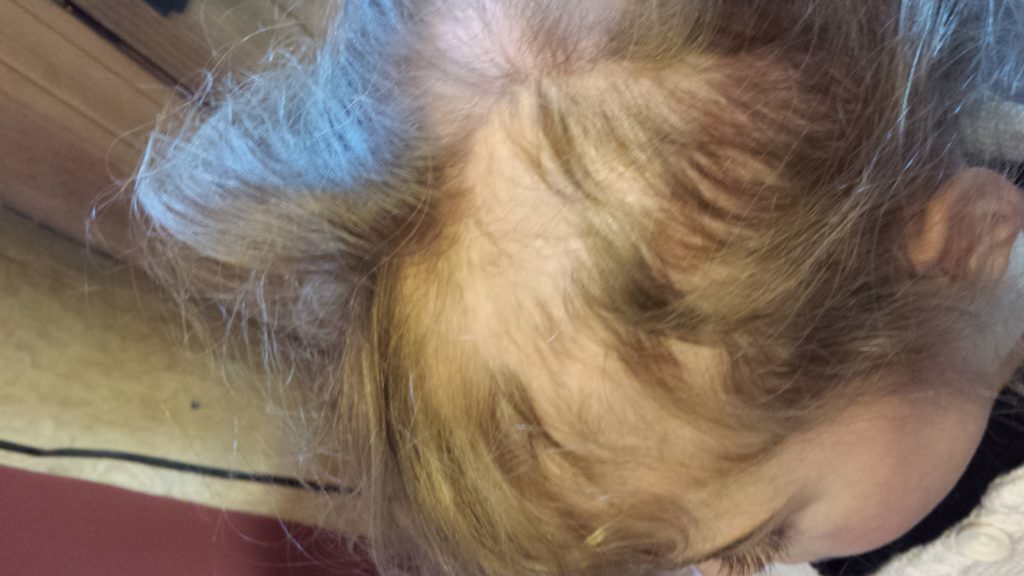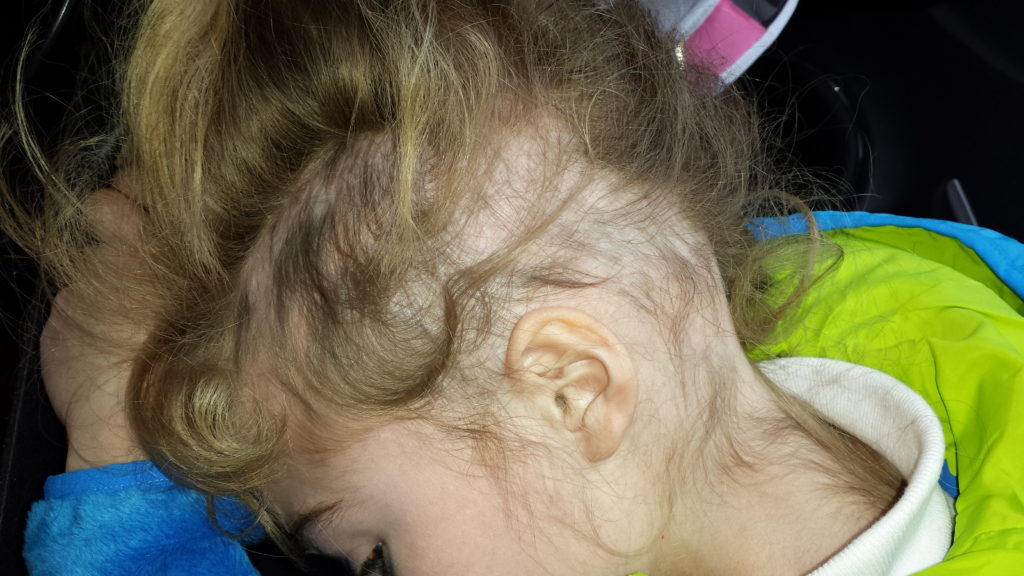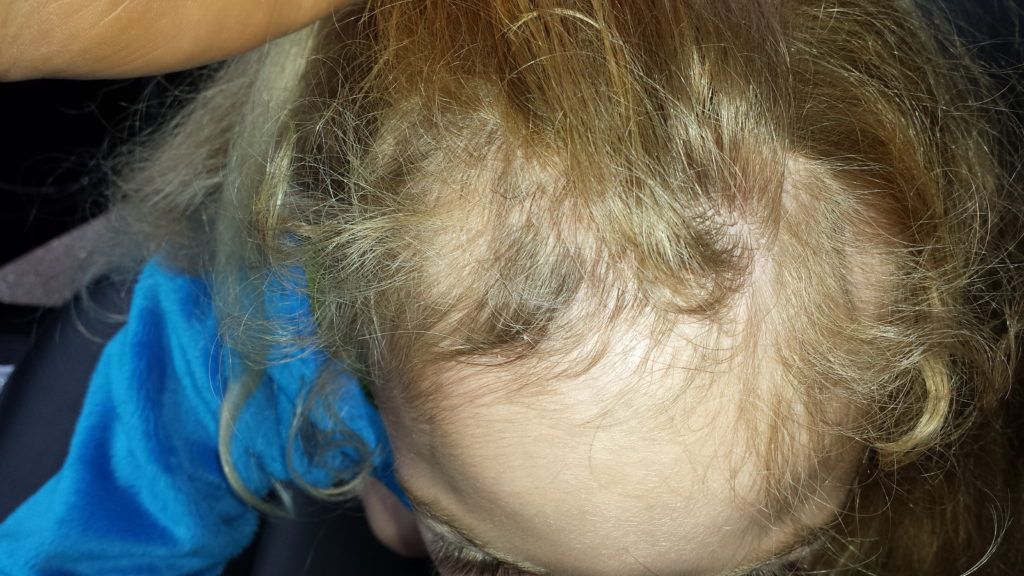A daughter, a mystery illness and baldness
Hair loss affects everyone
When my daughter Porsche was six, she became accustomed to strangers walking up and rubbing her head, muttering in a language she couldn’t understand. Two years later, parents and children would see her and cross the street in order to avoid coming in contact with her. Back then, I would have given anything for information, solutions and ultimately hope—which is what I intend to give to you.
In this, the first of a three-part series relating to the last seven years, I’ll go through the causes, what we tried and what finally worked. The last posting will be about a few of the pitfalls we encountered along the way.
Part 1: the beginning
When we visited Hawaii in December, four months after the Fukashima nuclear reactor melt-down, we thought nothing of being in the water. For two weeks, Porsche lived in the bay, at least four to six hours a day, every day. I was in the water the second most, but was tending my two year-old quite a bit, so my time was limited.
The year before it all started, showing our hair.
Three months later, bald spots started appearing on Porsche’s head, first a dime, here and there, then a quarter size. By June her head looked like it was diseased. What started as a “simple case of hair loss, or alopecia,” as is commonly referred to in dermatology circles, gradually evolved in a medical mystery. much more than that.
The hair started to go. Comb-overs, bangs and massive swaths.
The journey begins
Mom has always told me she can see the sadness in my eyes.
“Don’t deny it,” she’d say to me. “It can’t be disguised.”
When Porsche’s hair loss began, I started removing myself from pictures of my travels. That’s why you are seeing many of my posts over the last number years—up until this year, that I’m simply not in the pictures. (and here you thought I was being modest or shy all this time).
About nine months after the hair loss began, we began doubting the initial diagnosis by the (3) dermatologists. They’d promised rapid replenishment of hair, prescribed topic steroids and regular injections of steroids into the scalp. Our little six year-old had received her first set of injections in one bald spot, then another, the count growing from ten, then twenty, to a total of 59 shots in the first appointment. As the bald spots increased, do did the number of needles in her head. After two months, she was receiving over three hundred shots in her head, without numbing cream (it didn’t work) or numbing injections.
All the hair had gone underneath–the top layer was all that is covering the rest of her scalp.
Judgement and rejection
During this time, the suffering was as emotional and mental as it was physical. Mothers of Porsche’s friends requested we not attend playdates or activities where our children would interact. In truth, Porsche looked like a victim suffering from a transferable disease, and the kinder-hearted would assume leukemia. To the fearful and uniformed, even in a city like Seattle, she was treated as though she had Ebola. We would literally have parents see us, and walk across the other side of the road.
Six months later…..
For those who did have the courage to ask, we responded honestly. “We don’t know what’s wrong, nor do the doctors,” I’d admit. That led to more ostracization by the parents concerned enough ask our child be placed in a separate classroom.
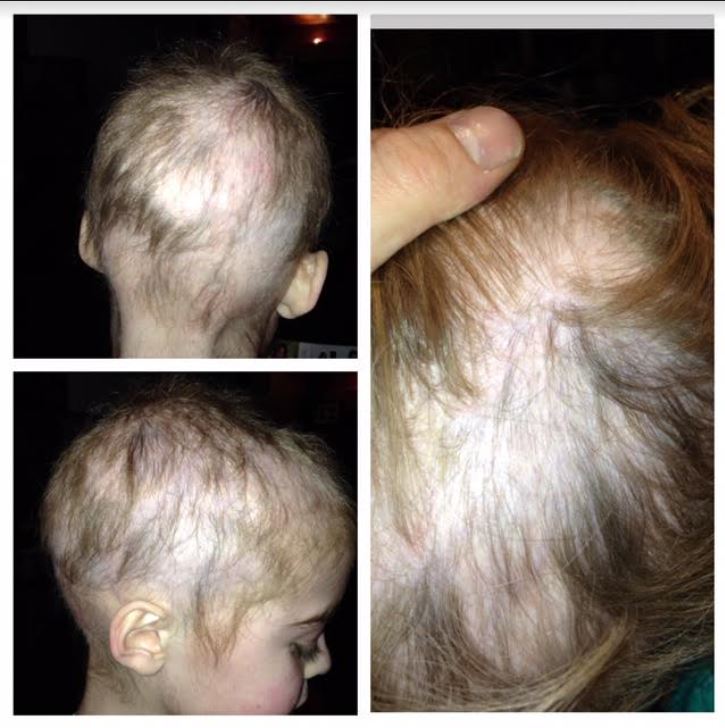
In the end, we could not longer hide and cover up the hair loss.
Over time, the questions changed, but they still felt like punches on an open wound.
“Your daughter used to be the tallest in the class. Has she stopped growing?” What I wanted to say was that the steroids we were using to keep my daughter’s hair follicles open were killing her hormones, and she was likely going to become sterile as a consequence, but thanks for asking. Instead, I’d used the well-honed technique of redirecting the topic of conversation to how much the accomplishments of their own child.
Hair follicles and injections
The months passed and the injections increased, now reaching 500 every six weeks, about the time it took the bruising the small scabs to heal then come off. Side note: injections in children, done by needle, are done without numbing cream or numbing injections. It’s not legal in some states, and in others, we learned the hard way that to numb the head requires injections themselves, then waiting, then another round of needles. We learned the hard way that the numbing agent didn’t always work, because the amount allowed to young children is so small. In effect, this caused Porsche more pain, because the number of shots effectively doubled. It took only several sessions for Porsche to announce that she would take all the shots straight, no numbing at all. Tough girl.
Why the injections?
We were referred to Dr. Robert Nebalski, one of the premier hair-loss specialists in the northwest, who had been working with peers in Italy and around the world on the causes and solutions to hair loss. He told us that no, he had no idea why Porsche was losing her hair, but until we found the cause, and identified a cure, we had to do one thing: keep the follicles open. However, of two things, he was convinced. The first, was that this was not “normal hair loss, or alopecia.” Second, the injections were a must.
“You need to keep the injections to keep the hair follicles open so when we do find a solution, the hair can grow through.”
Jump forward two years. Porsche was eight, and the last of her hair was falling out. Over the months, I’d been cutting her thick hair to make it appear thicker, and has become creative with comb-overs, braids and using headbands to cover the spots. But on Christmas Day, as I brushed her hair, an enormous swath just stuck to the brush. I lost it, holding back my tears until she’d left to sob. The day after Christmas, it was my husband who took Porsche to visit a wig store specializing in children stricken by cancer. We purchased two wigs, one real and one handmade using real hair. The latter he purchased that day, and the second, we had made (more on that in a separate post).
As we prepared her for the coming New Year, and returning to school with a wig, we encountered the questions of “Why is this happening to me?” or “Why am I going through this?” Of course, these are questions we all ask when hard times befall us, and we don’t always have answers. The one grounding messaging I stood upon was this: we all go through things that make us stronger, turn us towards seek answers and then help others if we can. I told her that her experiences would make her capable of handling whatever life would throw at her, and someday, she’d be able to help others.
Still, we had to deal with reality, and confront prejudices immediately. We encouraged her to be forthright about her hair, acknowledging it’s a wig, she has no hair, and that we are working on figuring out what’s wrong with her body.
That was what she did, and you know what? It worked wonders. Porsche told her friends and teachers, wasn’t ashamed that she had no hair, and after her wig came off in a game of tag on the playground, she suggested to the teachers (and boys) that they be careful not to pull on her wig.
For the time being, we were still searching for answers, had ordered a hair made from real hair, and waited.
Wigs 101
Synthetic wigs are a fraction of the cost of real hair, as in, $500 vs $4,000. The primary difference includes the ability to wash, curl and style a wig made from natural hair, versus one from synthetic. That said, the synthetic wigs are so well made, one had to get really close to tell it wasn’t natural hair, and it kept its shape perfectly. The hairstylist at the wig shop demonstrated how to use the under cap (made of nylon) and place the wig on from properly. In order to keep the form of the wig, purchasing and using a styrophome head is necessary. Every so often, it’s required to trim a few of the hairs that would stick up or out from the synthetic wig, and it couldn’t get wet or dirty.
In contrast, a natural wig is treated like regular hair, because that’s what it is. We had the hair custom dyed to match Porsche’s previous color, so it matched her skin tones. When it arrived, we also had it cut in a shape ideal for her face, while long enough to style.
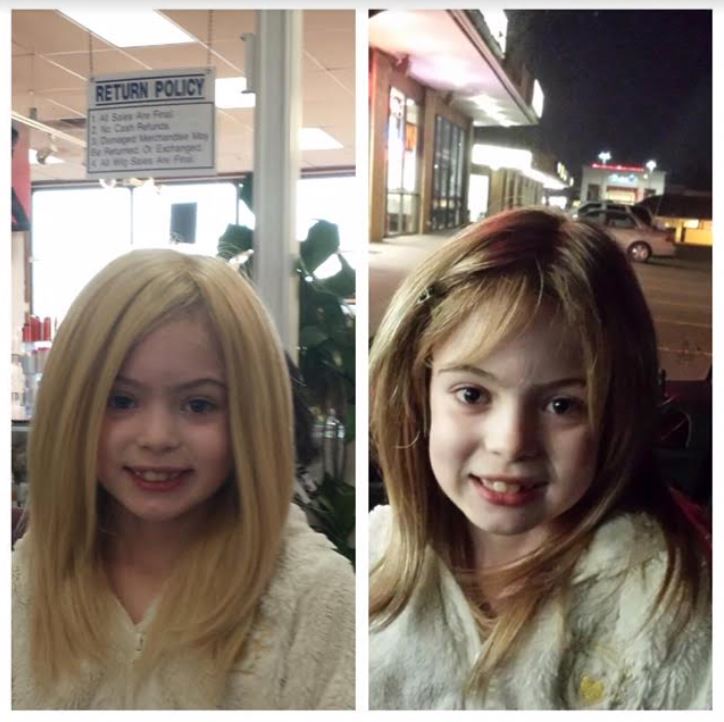
Can you tell which one is the real hair or the synthetic one?
A note-Porsche’s head continued to grow, and we knew that the wig had a lifecycle of about three years. When they no longer fit, it was my intention to donate the wigs to cancer victims. Imagine my disappointment when I contacted the local Children’s Hospital and was told they couldn’t accept the donations! Apparently, it would be a big, political mess to determine which children received the wigs, and they couldn’t possibly select two out of many. Not to be deterred, I found a seven year old girl who had experienced two different bouts of cancer and had had been profiled in the newspaper. The article mentioned her father, I googled him and tracked him down at a local car dealership. He took my cold call, (thinking I wanted a used car) and started crying when I told him I had two wigs for him. It was two weeks before Christmas, and he’d told me all his daughter had been praying for was a wig for her hair.
We both cried together.
Later that week, our families met. They’d lost everything as they mortgaged away their life to pay for their daughters’ treatment. In the living room of a friend’s home, we showed his daughter how to wear and take care of the wigs. Her smile was so bright and joy so full, we were without words. While we were no closer to discovering the source of our daughter’s situation, we gave thanks we had her in our lives, and that she was otherwise healthy and happy. It was a great start to what we were sure was going to be a better year. o

